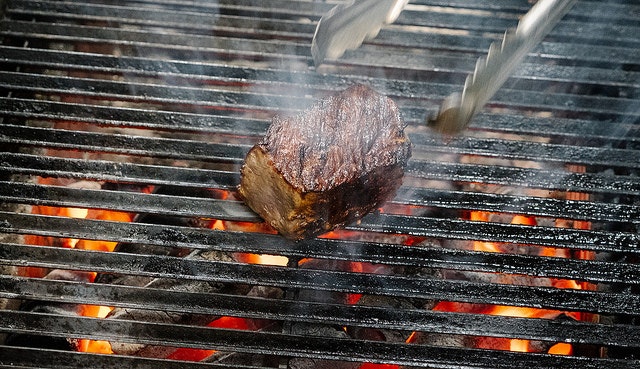Available now: Japanese A5 Wagyu
Crowd Cow works directly with some of the best Wagyu farms in Japan.
What is this “Wagyu” we’re talking about? Let me break it down for you. There are four breeds of “Wagyu” -- Japanese cattle, that is -- that are indigenous to Japan. One of them, Kuroge Washu, is genetically predisposed to high levels of marbling. It’s really hard to get authentic Wagyu 100% from the Kuroge Washu breed directly from Japan.
But we didn’t just source authentic Wagyu from this Pacific Rim nation.
We sniffed out the rarest of the rare when it comes to Wagyu, and found a micro-batch of Wagyu beef nestled away in a coastal corner of Japan’s smallest prefecture, that had been raised on a diet of olives that had been toasted and caramelized in the traditional Seto Inland Sea method. We found that this particular type of Wagyu -- they call it Olive Wagyu -- has the highest levels of healthy fats of any beef anywhere, at 65.2% oleic acid content. That’s what causes the melt in your mouth texture. It also has a bolder umami flavor than any other Wagyu; and at only 2200 Olive Wagyu animals in existence and just a few harvested per month, it might just be the smallest-batch steak on the planet.
Available now: Japanese A5 Wagyu
Crowd Cow works directly with some of the best Wagyu farms in Japan.


So Olives and Wagyu… How? And why?!
Olive Wagyu is one of the rarest steaks on the planet, produced by only a handful of farmers in the Kagawa Prefecture of Japan. It brings together two of the region’s most storied and delicious agricultural traditions -- beef and olives -- and marries them for stunning steak.
Cattle raising began in Kagawa Prefecture around the year 700, when cows were used by farmers as beasts of burden. Selected over centuries for draft power and musculature, the animals were formidable-looking but gentle. But it wasn’t until 1872, when emperor Meiji lifted the ban on meat-eating, that farmers in Kagawa started raising their cattle for meat. They quickly discovered those powerful muscles bred for labor in the crop fields -- but now allowed to relax in shaded pens -- made for meat so finely marbled with fat that it looked like pink filigree. This new Japanese beef, so marbled it makes any omnivore swoon, took Osaka, Tokyo, and later the world by storm. Beef from the Kobe region, in particular, became most famous because of its proximity to ports. Kagawa-area farmers, raising meat that was every bit as exquisite as Kobe, got short shrift because of their distance from big city markets.
In 1908, the Japanese government sent olive-tree seedlings all over Japan to test whether the fruit could be cultivated. It didn’t grow well in Mie, nor did the seedlings survive in Kagoshima. The only place olives thrived in all of Japan was on a small, cow-shaped island in Kagawa Prefecture called Shodoshima. The mild, Mediterranean-like climate of the Seto Inland Sea kept the trees -- and the cattle on the island’s farms -- warm. A niche olive-oil industry sprang up, with the bottled oil shipped off to high-end kitchens around the world, and the leftover olive mash discarded as waste.



Cattle farmers on Shodoshima Island and elsewhere on the Kagawa mainland were struggling in the early 2000s. They produced beef as marbled as any Kobe, but the world had no market for them. Their farms were just too far from the ports. But in 2006, all that started to change, because that was the year a cattle farmer on Shodoshima named Masaki Ishii started testing different methods of toasting the leftover olive pulp from olive oil production on the island. He had a hunch that if he could get his handful of cows to eat the olives, the healthy oleic acid the fruits are known for might impart into the meat, carrying their great health benefits.
First, he tried feeding one of his cows raw olive pulp. No dice. Super bitter. Next he innovated, drawing upon an old technique of drying persimmons by air in the Seto Inland Sea breezes. Ishii-San lay the olive lees out on rocks by the shore and waited for them to toast. It took 3 years to perfect the technique, but perfect it he did. Slow-toasted olives, when completely draw, were sweet, malty, and delectable. The cows loved it.
And when Ishii-San harvested those first olive-fed Wagyu steers, he found that something extraordinary had happened to the meat. It was higher than any other Japanese Wagyu -- including Kobe -- in monounsaturated oleic acid and richer in umami flavor.





Available now: Japanese A5 Wagyu
Crowd Cow works directly with some of the best Wagyu farms in Japan.
